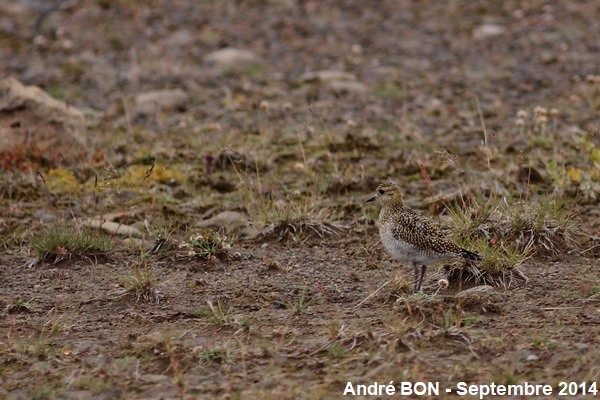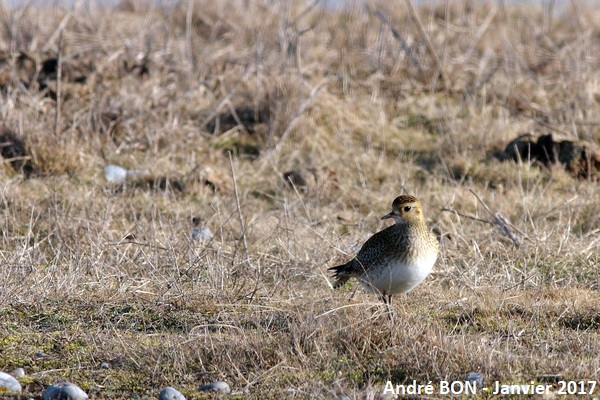

| European Golden Plover (Pluvialis apricaria (Linnaeus, 1758)) |


|
|
Scientific name: Pluvialis apricaria (Linnaeus, 1758) Common name: European Golden Plover French name: Pluvier doré Order: Charadriiformes Family: Charadriidae Size: Body size: 26 to 29 cm; Weight: 140 to 230 g; Wingspan: 67 à 76 cm. Habitat: Flat and open areas with low growing vegetation: Tundra, heathlands, marshes, meadows. Food: Insects and their larvae, earthworms and slugs but also some plants. Nesting: Small depression dug by the male and then garnished with dry grasses. Females lay 3 or 4 eggs between late March and late July depending on the location. Migration: Northern populations migrate to Western Europe in winter and can form flocks of more than 5000 birds. Then these flocks move following weather conditions to fly further south in case of cold snaps. Populations of Great Britain are only partially migratory. Geographic area: Northern regions of Europe and Western Asia. |
When in breeding plumage the European Golden Plover shows a black and golden spotted upper side. The under side of the body and underside of the head are black on males. This black area is broadly bordered with white. The Pluvialis apricaria altifrons subspecies, which is found in the northern regions, shows a larger black area than the Pluvialis apricaria apricaria subspecies which is found from Great Britain to northern Germany. The head is rounded, the neck is rather short and the legs are long. The short bill is black. When in winter plumage the upper side is a duller colour and the black on the underside disappears. The abdomen turns to whitish. The Grey Plover (Pluvialis squatarola) has a stronger bill. It does not show any white stripe on the flanks when in breeding plumage. The method to tell it apart from the European Golden Plover, when in winter plumage, consists in seeing, in flight, the black spot on the underside of the base of the wings which is missing on the European Golden Plover. Let's also mention the occasional species in Europe, namely the American Golden Plover (Pluvialis dominica) and the Pacific Golden Plover (Pluvialis fulva). They differ from the European Golden Plover by the greyish underside of the wings while the base of the underside of the wings is pure white on the European Golden Plover. There are also other differences like the lack of a white stripe on the flanks of the American Golden Plover in breeding plumage. The patterns on the upper body are also rougher on these two occasional Plovers compared to the European Golden Plover. |
| [To know more about the European Golden Plover] [Next picture] [Top] |

|
The European Golden Plover's plumage makes it very difficult to detect among low growing vegetation. |
| [To know more about the European Golden Plover] [Previous picture] [Top] |

|
I observed this European Golden Plover during a walk in Hâble d'Ault, not far from the Baie de Somme. |